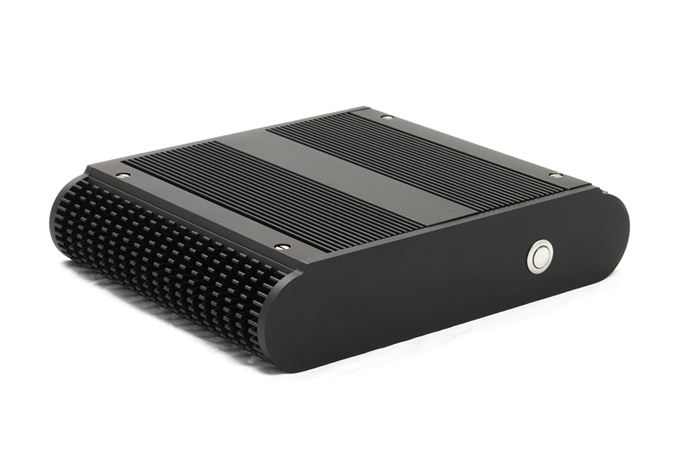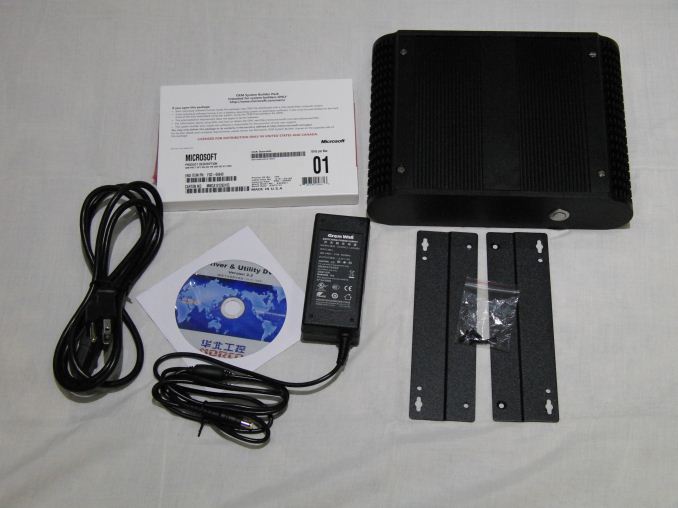HABEY BIS-6922 Fanless Ivy Bridge Industrial PC Review
by Ganesh T S on August 13, 2013 9:00 AM EST- Posted in
- Industrial PC
- Ivy Bridge
- Passive Cooling
- Habey

Introduction
Industrial PCs come with stringent requirements that are not satisfied by generic PCs. It is customary for builders to use active cooling in order to ensure that the components are in proper working order. Ventilation slots are also provided to keep airflow up. Chassis size is also not always a concern. However, these flexibilities are not always possible in industrial PCs. Operating environments for such systems usually call for passive cooling, dust resistance, rugged nature and minimal size (read, mini-ITX).
We reviewed the Aleutia Relia last year. Today, we are adding another fanless Ivy Bridge PC to the list, the Habey BIS-6922. The unit was launched late last year. Unlike units meant for the traditional PC market, embedded and industrial units are more focused on long term support and reliability rather than the latest and greatest that the silicon vendor has to offer. So, it is not surprising that Ivy Bridge-based industrial computers are seeing a strong presence in the market only now, after long-term validation by the manufacturers. The high level specifications of the BIS-6922 are available in the launch piece. In the table below, we have a quick overview of the configuration of the review unit sent by Habey.
| Habey BIS-6922 Industrial PC Specifications | |
| Processor |
Intel Ivy Bridge Core i7-3720QM (4 x 2.60 GHz (3.60 GHz Turbo), 22nm, 6MB L2, 45W) |
| Chipset | Intel QM77 |
| Memory | 2 x 4GB DDR3-1333 |
| Graphics |
Intel HD Graphics 4000 650 MHz / 1.25 GHz (Turbo) |
| Disk Drive(s) | 60 GB Intel SSD 330 |
| Networking | 2 x Gigabit Ethernet |
| Audio |
Microphone and headphone/speaker jacks Capable of 5.1/7.1 digital output with HD audio bitstreaming (HDMI) |
| Operating System |
Windows 7 Professional 64-bit (Retail unit has choice of OSes including barebones option) |
| Pricing (As configured) | ~$1500 (Varies depending on customization) |
| Full Specifications | BIS-6922 Specifications |
Our review unit came with the above internal configuration. In addition, we had the installation disk for a OEM copy of Windows 7 Professional x64, a 60 W DC power adapter, mounting plates with screws and a driver and utility CD. I wonder why companies bother with these optical discs when the product itself carries no optical drive. With Flash becoming more economical day-by-day, it might make better sense to bundle these in a USB stick instead of a CD or DVD.
The first section of the review will deal with the setup impressions and teardown of the system. We will take a close look at the thermal design. This is followed by results from our performance evaluation. The numbers will help up get an idea of the relative performance of the unit compared to other PCs with low power consumption. A separate section on thermal performance is also included.











63 Comments
View All Comments
ganeshts - Tuesday, August 13, 2013 - link
Definitely not throttling, but I guess the discrepancy is that Habey locks the frequency to 2.6 GHz (Turbo disabled by default, which is what I tested). Maybe your 3630QM is not Turbo-locked in the BIOS.I was keeping track of the CPU freq all through the benchmark programs and also during the 18-hours stress test.
whyso - Tuesday, August 13, 2013 - link
Ah, nice. (It would really be nice if when a result is below normal we got to see the CPU frequency).Still weird why they would pay extra for the 3720 and then disable turbo compared to simply using a cheaper 3630/3610 or even the 35 watt 3612 with turbo.
ganeshts - Tuesday, August 13, 2013 - link
You can go to the BIOS and unlock Turbo, as long as you are confident about the ambient conditions as well as how much you are going to stress the unit.From our testing, we can guarantee it will thermally hold up for full load at 76 F with the CPU at 2.6 GHz and GPU at 1.125 GHz.
airmantharp - Tuesday, August 13, 2013 - link
I'd think that Turbo would be useful if the system were in a ventilated environment or wasn't subjected to sustained loads, from a race-to-idle perspective. I do understand the reasoning behind leaving it off by default, though, as it prevents wild swings in performance due to throttling after Turbo.ervinshiznit - Tuesday, August 13, 2013 - link
On the power consumption and thermal performance page, it is stated that it is throttling."One of the unfortunate aspects of the Aleutia Relia was that the unit ended up getting throttled when subject to heavy loading even at room temperature (72 F)."
owan - Tuesday, August 13, 2013 - link
That as a different unit that they had tested earlierSlomo4shO - Tuesday, August 13, 2013 - link
So a laptop converted into a desktop?vision33r - Tuesday, August 13, 2013 - link
More like a desktop shrunken down. With laptop components the system should run much cooler and tinier.thesavvymage - Tuesday, August 13, 2013 - link
it does have laptop components... the QM in the processor model designates Quad core Mobile.rob_allshouse - Tuesday, August 13, 2013 - link
Why a CD vs a USB? I've had to make one of these decisions recently. $0.12 vs $2-3, on something people just use the internet for anyway. The customer really doesn't want to pay an extra $3 for something that 99% of them don't use.